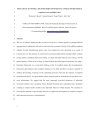The use of olfactory stimuli and the provision of food are a common practice to prompt artificial aggregations of emblematic wild species and ensure the economic viability of the wildlife-watching industry. Several elasmobranch species have been targeted by such operations in a variety of locations for over four decades. A recent review succinctly addressed the potential effects of shark diving tourism, including shark provisioning, on shark individual behavior and ecology, but the general paucity of data on the ecology of elasmobranchs precluded general statements. By using a functional framework, we reviewed the findings of the 22 available studies that investigated the behavioral, physiological, and ecological response of 14 shark and three ray species targeted by artificial provisioning. Focusing on the underlying processes that rule the response of targeted elasmobranch species, we report further effects acting beyond the individual-scale and their cross-scale relationships. We suggest that the most commonly described alterations of individual movement patterns have cascading effects through the group and community-scale, ultimately resulting in altered health condition and individual behavior toward humans. We conclude by stressing the potential for provisioning activities to support the investigation of complex ecological and behavioral processes in elasmobranchs.
Liste




 English
English